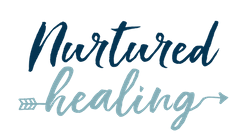Part 2: Know Your Baseline
While there are plenty of mistakes we make when it comes to changing habits, our willpower is not the problem. What we can point the finger at is skipping the foundational things that help cement the change into our lives. In this blog series, we will explore the five things you need in place when changing your habits.
The first thing you need in place to change your habits is to know your core reason for making your change. Click here to read Part 1 and complete an exercise to identify your “why.”
The second must-have when changing habits is to Know Your Baseline.
We all know how satisfying it can be to see effort pay off. One of the key ways to ensure you are able to feel satisfaction when changing or creating habits is to understand and take note of your baseline or starting point.
In order to bridge the gap from where you are to where you’d like to go you need to know where you are starting. It’s imperative to get a snapshot of where you are beginning so that you can understand when you’ve made strides. The insight provides actual data to evaluate when changing or creating a habit. It not only helps you understand if you are making progress, but also helps you identify where to focus your efforts.
For example, if you want to increase how much you exercise, you need to look at your personal exercise baseline. An increase in your exercise regimen will be different based on where you start from. Are you a runner who already trains 4x per week or are you just getting back to exercise after a two-year hiatus due to an injury or illness?
Or if your goal is to get more sleep, you’ll need to answer the question, how much sleep am I getting now? Your next step will vary greatly depending on the answer you give. If you are only sleeping 5 hours per night you will not want to jump straight into trying to sleep 8 hours per night.
Drastic shifts from what we are used to don’t usually stick. Our brain and bodies aren’t familiar with the routine and it can be too much to bite off at once.
What’s Your Baseline
Grab a pen and paper and think about the change you are trying to make. If it’s a current habit that you deem unhelpful and are trying to rid yourself of - how many times per day or week are you engaging in the habit?
How long has the habit been a part of your life? Ever since you can remember? The last 10 years? Since the pandemic began? Write down any details that come to mind. Be as honest as you can with yourself.
If you are working to establish a new, helpful habit, are you engaging in it at all currently? How often? If not, have you tried it before? At what frequency? In your current circumstance, what feels easy to start with?
Once you identify your initial measurement, (i.e., I meditate once per week) you have a point of reference from which to work. Your baseline will be used to create your plan for change (i.e. I meditate once per week and I want to meditate every day). In the next blog post we will explore putting your plan into action.
Please note, it’s important to be kind to yourself and avoid self-criticism when it comes to your baseline. Getting caught up in negative self-talk about where you are versus where you want to be will not help you make progress. It will actually serve to help keep you stuck.
No Comparison Allowed
It can also be tempting at this point to compare your beginning to someone else's middle. That mode of “motivation” usually only proves to be defeating in the end.
Your personal baseline is personal for a reason. No one on the planet has the exact same circumstances, skill set, personality traits, abilities, strengths or shortcomings as you so no matter how you view it the comparison will not be apples to apples.
Author Jordan Peterson summed this up perfectly when he said:
“The best person to compare yourself to is you yesterday,
not someone else today.”
If you have made it this far, it’s clear that you’re serious about changing your habits and want to understand the 5 must-have strategies for making change successfully. If you haven’t already, check out Part 1 and stay tuned for Part 3 next week!







